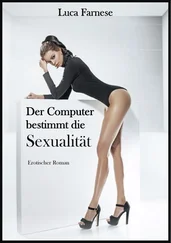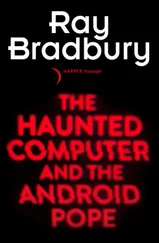“I realized that my calculations were more than exercises,” Lutus told me. “I saw a way to capitalize on my unique way of thinking about things. Programming started out as fun, but I certainly didn’t object to making money from it.”
(This is a familiar refrain. Many other software entrepreneurs, me included, were disbelieving when we first learned that people were actually willing to pay us to mess around with programming. I remember how I felt when I saw my first royalty check for Galactic Empire.)
Paul then became more and more interested in programming for microcomputers. Although eventually he would write a little science fiction software himself, he was mostly interested in building tools for computer owners—word processing programs and graphics programs that people could use to make their own discoveries. Tools of this nature help People win their independence and offer a very attractive kind of profession to someone like Paul, for whom making his own discoveries has been one of the most dominant themes of his life and work.
And so, after the HP calculator, Paul bought himself one of the early Apples, which he connected to his generator. Having low serial numbers is quite a status symbol among Apple fans, and Paul always points out that his Apple II was number sixteen. One of the things he thought about in his mountaintop retreat was how to create programs that were compact enough to fit into the very limited memory space of these early machines. It was the perfect kind of intellectual puzzle for him: After a life of drifting between art, technology, and vagabondage, he had finally found a pursuit so absorbing that he could pass entire nights solving a programming problem without noticing that sunset had turned to dawn. He sent more than thirty cassette-based programs to Apple, which bought most of them—for anything from $100 to $500 each.
But few of the programs Apple purchased were ever distributed. Of the few that were published, one of them, strangely enough, had initially been rejected by Apple. It was a simple music program—a tone generator. It was finally printed and attributed to Paul, whose name was nevertheless misspelled in Apple’s famous “Red Book”—their first, terribly written, technical reference manual. (Software publishing was a lot looser back then; nowadays, a mistake like that would lead to a lawsuit.) Lutus then sold some programs to other companies, but he never made more than a few hundred dollars per program until the spring of 1978, when he returned to the San Francisco Bay Area to work on another Space Shuttle job. He brought with him a cassette that would enable the Apple to understand a few spoken commands. He asked Apple for a thousand dollars up front. Apple offered him one of their new disk drives in return for the program.
When he got back to Oregon, late in the spring of ’78, Paul turned out a variety of small programs for different manufacturers, and he thought he would attempt a more ambitious program—a word processor. He had been trying to write an article about Albert Einstein and resented all the time he lost retyping drafts. What he needed was a computerized writing tool—a program that would enable his Apple to do what fancier word processors on bigger computers could do. By the end of the summer, he had a crude working version of Apple Writer. He didn’t know it at the time, but this was the first version of the program that would make him a millionaire.
Lutus took this version of Apple Writer down to Apple and demanded a flat fee of $7500—far and away the most money a programmer had ever asked for thus far. Having sold only about 5000 of the new Apple IIs by the fall of 1978, Apple was still a small enough company to consider $7500 to be an issue for serious deliberation. The Apple people finally agreed, but they kept asking him to make changes, additions, and fixes on the program. After a while, he decided that he had no obligation to continue fixing the program until he ended up upgrading it to a new version (something every programmer has a right to charge for) for free. He then began to conceive of new features for a completely revamped word processor, and he started writing the program that eventually became Apple Writer II .
By 1979, Lutus programs were selling for between $5000 and $10,000 apiece. He was now earning more money in a single month than he had made in all of his vagabond years combined. Over a year had passed since he had sold the first version of Apple Writer. At about this time he had completed another word-processing program that he claimed was a radically new product. Because Apple still paid flat fees instead of the royalty arrangement Lutus now wanted, he began to look around for a publisher. Having once met Peter Jennings of Personal Software, publishers of VisiCalc , Paul wrote him a letter and proposed that Personal Software publish the new Lutus word-processing program under the name LexiCnlc. Dan Fylstra, whom Lutus had not known previously, immediately took over and asked Paul to “refrain from serious negotiations with anyone else” during Personal Software’s forty-five-day evaluation period.
Lutus was to receive $1500 for the waiting period, during which, according to Lutus, Fylstra asked for various modifications in the program. He began to sense that he was creating a whole new version before he even had a contract. Although he swears that he never initiated negotiations during the option period, Paul was contacted by Apple, which told him they had heard about his program via a friend inside Personal Software. The software people at Apple, who were not willing at first to meet Paul’s demand for a royalty arrangement rather than a flat fee, were nonetheless eager to see his program. Somehow, word of this traveled back to Fylstra, who immediately launched into an acrimonious dispute with Lutus over the phone and via letter.
Lutus eventually sold his program to Apple, but this time he received an advance against royalties instead of a fee. Since Apple was selling considerably more than a few thousand machines by this time, Lutus started receiving royalties that soon amounted to more than $5000 a day. Whereas Apple Writer had been only a modest success, Apple Writer // remained the best-selling word processor for the Apple for five years; his 25 percent royalty on this one program made Paul a millionaire.
The first wave of successful Apple programmers made more money in a few years than almost any mainframe or minicomputer programmer normally makes in a lifetime. For example, Paul Lutus earned more than a million dollars a year during the 1980-83 boomtime, and the word-processing program he created with his generator-powered Apple earned him nearly 3 million dollars in royalties in a single year.
Before long he had enough money to indulge his longtime dream of flying his own plane. He even moved out of his old cabin at Eight Dollar Mountain and donated it, along with his first airplane and thousands of dollars, to The Nature Conservancy, a wilderness preservation group. He became the sole source of financial support for Planned Parenthood in southern Oregon. (Because, he claims, his own childhood was so miserable.) After building a series of progressively larger cabins he finally moved to a real house—one that he didn’t even pack in and assemble himself. He has an airstrip now. as well as two airplanes. He writes articles, continues to support charitable ventures, flies around making speeches to school children, publishes slim volumes of poetry, and is still one of the best programmers in the business.
Paul’s current house—the one he invited me to recently—is a rambling, white stucco and terra cotta tile affair in the Spanish style, with a central courtyard and a thick, ornately carved front door. If you can envision a slightly scaled-down version of President Nixon’s Western White House in San Clemente, and put it in rolling hills surrounded by Douglas firs instead of on a cliff that overlooks the Pacific, surrounded by palm trees, you get the picture. The house, which was originally built by a survivalist, even had a moat around it when Paul first moved in, but he filled it in and planted a garden.
Читать дальше










